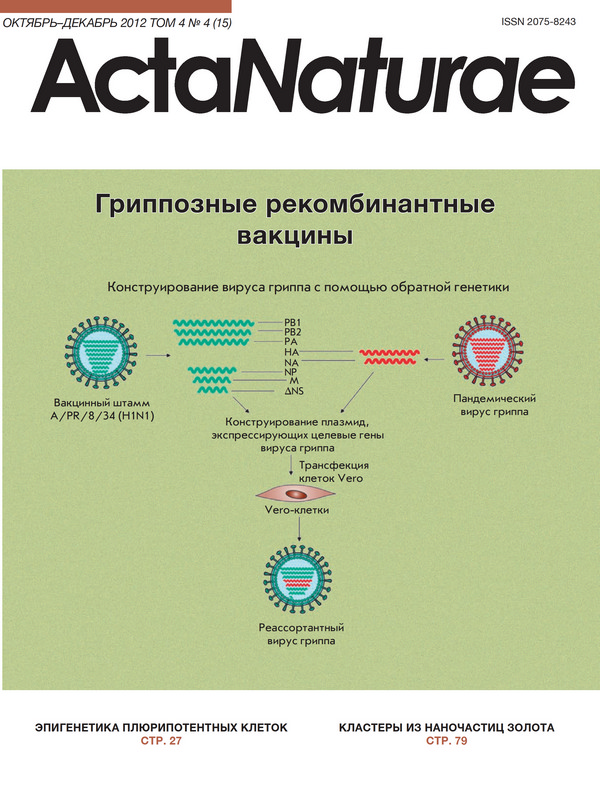Full Text
the early 1980s, G proteincoupled receptors (GPCR ) and membrane receptors that belong to other classes had yet to be obtained as individual proteins and subsequently cloned. Here, one should do justice to R. Lefkowitz, who employed the synthesis of new ligands, affinity modifications, and other techniques to purify and isolate adrenergic receptors. In 1987, the clones were obtained and expression of the human β-adrenergic receptor was carried out at R. Lefkowitz’s laboratory, with the active participation of B. Kobilka, at that time a young researcher working at the laboratory. Since then, R. Lefkowitz has led the field inthe thorough investigation of the functions of adrenergic receptors and in the elucidation of the general principles of cellular signaling with the participation of GPCR . He has discovered β-adrenergic receptor kinase, elucidated various functions of β-arrestin, and thoroughly characterized the processes of phosphorylation and desensitization of GPCR. These functional studies performed by R. Lefkowitz have always been closely linked to medicine and were carried out with allowance for the diversity of the physiological functions of adrenergic receptors (in particular, regulation of cardiac activity). During the past two decades, B. Kobilka has focused on determining the spatial structure of GPCR . One should not forget that all GPCRs are membrane proteins whose crystallization (similar to that of any other membrane protein) is still considered a challenging task. The first concept regarding the spatial structure of GPCR (“seven pillars”) was obtained through the electron microscopic study of bacteriorhodopsin (Henderson, Unwin, 1975). Although this protein is a light-activated proton pump (not a GPCR ), the presence of bound retinal and the homology of primary structures allowed to hypothesize that the actual GPCR , rhodopsin, has the same structure. In the late XX – early XXI century, the highresolution electron microscopic structure of bacteriorhodopsin was obtained (Henderson, 1998) and the crystalline structure of rhodopsin was determined (Palczewski, 2000). It is worth noting here that the primary structures of bacteriorhodopsin and rhodopsin were determined in our country at Academician Ovchinnikov’s school (1982), which required developing ways to isolate and analyze membrane proteins. Prior to the identification of the crystal structure of rhodopsin, bacteriorhodopsin had been used as a model for the analysis of the spatial organization of GPCRs. Rhodopsin was subsequently used for this purpose; however, it is obvious that this approach had certain limitations, and that determining the detailed spatial organization of individual GPCR was necessary. To do this, B. Kobilka and his colleagues set out to master the entire arsenal of techniques used for the solubilization, stabilization, and crystallization of membrane proteins, including the synthesis of new detergents, analysis of GPCR –antibody complexes, or chimerization with easily crystallizable foreign proteins that do not disturb the function of GPCR . As a result, a high-resolution crystal structure of the β2-adrenergic receptor was published in 2007. The structures of the complexes between this receptor and various ligands were subsequently determined. This has opened up possibilities for designing novel drugs. Huge experience has been accumulated, and the general methodology has been elaborated, since over the past few years B. Kobilka and his colleagues have determined the crystal structures of two individual subtypes of muscarinic acetylcholine receptors Winners of the 2012 Nobel Prize in chemistry Robert Lefkowitz and Brian Kobilka Chris Hildreth/Duke Photography/Duke University Linda A. Cicero / Stanford News Service and the μ-opioid receptor. Interestingly, the spatial structures of an additional three subtypes of opioid receptors have been determined in other American laboratories almost simultaneously. In all the cases, those included both the structures of ligand-free GPCR receptors and the structures of their complexes with pharmacologically important ligands, which opened up the way to elucidating the pharmacological differences between receptor subtypes belonging to the same family. B. Kobilka and his colleagues have also determined the structure of the β2-adrenergic receptor complex with G protein. The identified crystal structures not only facilitate the designing of novel drugs, but also open up the way to a thorough elucidation of the molecular mechanisms of cellular signaling with the participation of these receptors. GPCR is the most common class of membrane receptors, which are considered to be the targets of over 30% of all commercially available drugs. However, this does not mean that other classes of membrane receptors deserve no attention or that their spatial structures are of lesser interest. Noteworthy that the 2003 Nobel Prize in chemistry was awarded to P. Agre and R. MacKinnon for the identification of the spatial structures of aquaporin and the potential-dependent K+ channel. The crystal structures of a number of ligandgated channels, which are involved in memory formation and transfer of pain signals and participate in other essential physiological processes, have been determined over the past few years.







